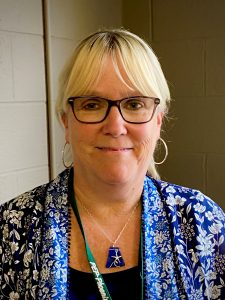Views on Equity from a White Teacher
Snapshots of Racism
Being a White teacher while being a champion of equity is a little like having a cloak of invisibility. Other White people believe they can speak freely to me about their racist beliefs and that I – being part of the “club” – will validate their point of view. Because of this, over my career, I have had dozens of experiences that illustrate that many of my colleagues haven’t really made it out of the 1950s in their thinking. Let me share just a few examples.
- In my first teaching position in the early 1980s, it was common practice for teachers to face the desks of Black students toward the corners of the classroom.
- In the mid-1980s I was a teacher in a suburban Cleveland school district and was called to a staff-only union meeting on the pretense of discussing union business. The true purpose of the meeting was to discuss the Black principal of the district and “what she was really doing there.”
- In 2014 I was an administrator at a different suburban Cleveland district. I ran into a teacher in the hallway at the start of the year and asked her how her year was going. She replied, “I got all the dumb Black kids from CMSD.”
- At the same district, a study was completed, and the findings revealed that children from poor White families did better academically than children from rich Black families. The district refused to publish it.
Sadly, this is but a snapshot of the discrimination I have witnessed over my 41 years as an educator and administrator. To be sure, there has been some progress. You will find many staunch equity champions, both Black and White, in many districts. Many districts have formal Diversity, Equity and Inclusion initiatives or work with outside experts to promote equity in their work. Many also have student equity clubs and ensure their young people have a voice in this work.
I also feel it’s important to say that my experiences in teaching and administration — both in-state and out-of-state — have overall, been positive. I’ve spent 42 years in this career for a reason. I love teaching, developing relationships with students and families, and making strides to improve education alongside community partners. It has been a wonderful and rewarding career.
And yet, I have noticed a troubling trend among some of my White acquaintances who aren’t aware of my stance on equity. When speaking about racial equity in schools, they say the right things. They are shocked that inequity is still so prevalent. They are saddened by the plight of those who are oppressed. They wish something would happen already to make inequity go away. And they probably mean it. Yet, moments later, they walk away from the conversation, putting it out of their minds and carrying on with their lives. It almost seems like some White people believe that blatant racism and discrimination against school children is something from a by-gone era. I can tell you with certainty, it is not.
As a White teacher and administrator who has repeatedly seen discrimination and the impact it has on children, I have an urgent message to share with those who aren’t actively engaged in this fight: It is WAY past time to act and do something.
Taking Action
Obviously, there are larger, systemic failures – like unconstitutional school funding, for example – that perpetuate inequity. When you take a serious look at what is happening in our schools, it is easy to become overwhelmed at the magnitude of the injustice. So, while the smaller steps we take as individuals may feel inadequate, the alternative – doing nothing – is worse. We may have a very long way to go, but there is a lot we can do to begin making strides toward equity today. Here are just a few.
All Individuals
- Educate yourself. It’s hard to have compassion for those who experience discrimination if you don’t understand that it is happening and what its impact is.
- Be intentional about building connections. If you are a White person and almost all the people you associate with are also White, you must be deliberate in making connections with people who don’t look like you.
- Perhaps the best means anyone has in upending systemic racism is by supporting and voting for candidates who will fight for equity.
- Support organizations that attempt to address inequity or those that provide resources and help to those who face racism and discrimination.
- Support Black-Owned Businesses. Google “Black-owned businesses” and your city’s name and you will find dozens of options for shopping at Black-owned businesses.
- Lobby. When there are marches in Columbus, march. When unfair bills are introduced, call or write to your legislator.
District Leaders
- Evaluate your hiring practices. Are almost all the teachers in your district White? Take a close look at that and ask yourself why. You must be deliberate in seeking out a diverse workforce.
- Be present. Administrators and other leaders must take time to regularly visit hallways and classrooms and understand the dynamics at play – including any potential discrimination – in their building.
- Address concerns. If you do encounter a concern, such as one like the comment mentioned above (“I got all the dumb Black kids from CMSD.”) address it seriously. Report it and demand action. At a minimum, training is required. If that is not effective, termination should result.
- Review your curriculum. Ensure that the materials you are using include adequate representation, diversity of characters, diversity of authors, and themes of social justice.
- Promote diversity in your district. Some leaders in all-White districts believe this work doesn’t apply to them. That is not true. These leaders must find ways to encourage diversity in their student body, staffing, and programming. Community leaders should be involved with this issue as well, finding ways to promote diversity in all schools in their community, both public and private.
College-Level Educators
- Promote education careers to diverse communities. Ensure outreach for your college includes students of all backgrounds.
- Examine your required coursework. Examine what we are teaching our future educators. Are they being exposed to information that will help them promote equity once they get to the classroom?
Our Kids Deserve Champions
Many of the young people we serve at PEP have experienced complex developmental trauma and generational poverty that result from systemic and institutional racism. These young people are hurting. Some are struggling to make it through the day. It can break your heart.
At Positive Education Program our vision is an equitable community where every young person is valued and experiences joy and deep fulfillment – and we live it. What gives me hope is seeing the progress young people make at PEP when they are in an environment surrounded by people who support and believe in them unconditionally. I am proud and grateful to work for an organization that embraces the ideals of equity and fights for them. I see our work – our philosophies and our endeavors toward justice – make a difference in the lives of the children we serve.
Obviously, it’s going to take more than the above list to get close to achieving an equitable community. But in the meantime, it’s time for everyone to take up the fight in as many ways as they can. Our kids deserve more than adults who know the right things to say. They deserve champions who will stand up and do something.
 Contributed by Marilyn Mauck, Chief Instruction and Achievement Officer, Positive Education Program
Contributed by Marilyn Mauck, Chief Instruction and Achievement Officer, Positive Education Program
